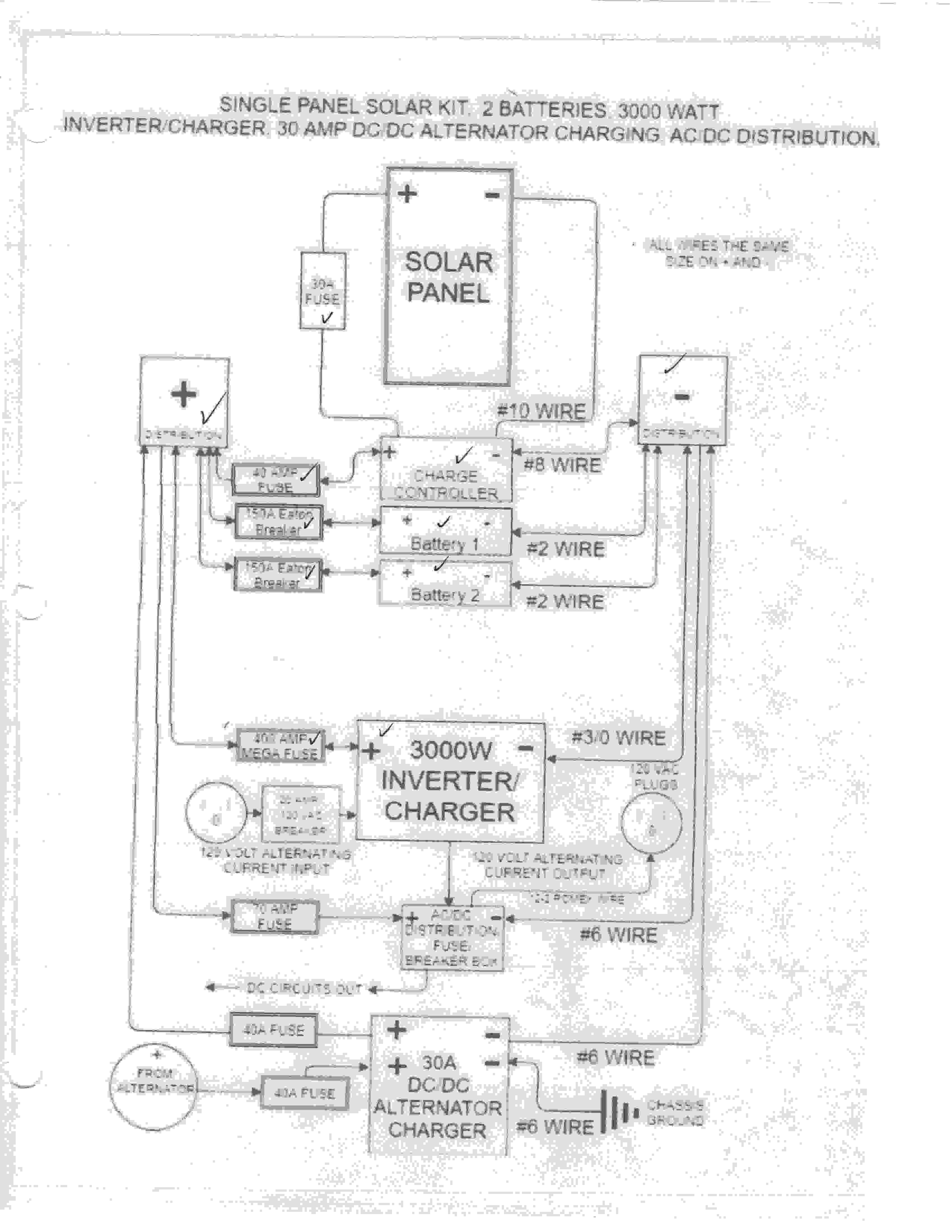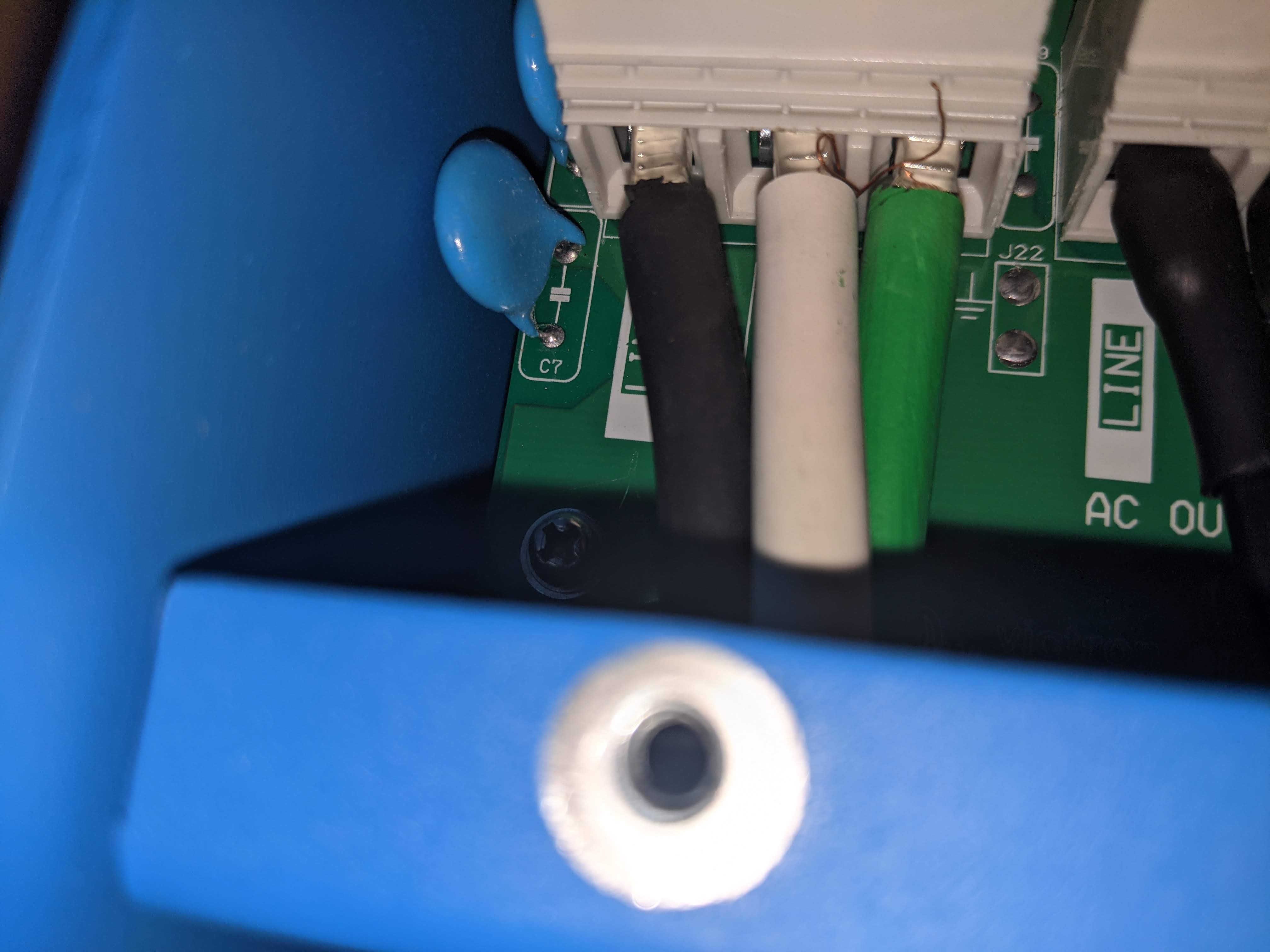I have a shore power input connected to my Multiplus. It works fine when I use a non-GFCI outlet in my house, but when I use an exterior GFCI outlet the ground fault breaker is thrown.
Have I done something wrong? Is this dangerous?
- Home
- Anonymous
- Sign in
- Create
- Spaces
- Grafana
- Node-Red
- Unsupported topics
- Questions & Answers
- Modifications
- Communauté francophone
- Deutschsprachiger Bereich
- Preguntas en Español
- Explore
- Topics
- Questions
- Ideas
- Articles
- Badges
question
Why is hooking up to shore power throwing the GFCI?
Never ignore a tripping GFCI.
For some reason, too much current is going from live to ground. Worst case is the chasis of your mobile installation is connected to live and the only thing keeping you from getting shocked is the rubber wheels. If you are confident in your wiring of the mobile installation, try connecting to an outlet with a GFCI somewhere else. You may have GFCI protected outlets in the bathroom, kitchen or elsewhere. There are also loads of portable GFCIs available. If it works fine you may have some other ground faults in the house, or a bad or too sensitive GFCI.
Don't resort to using a non GFCI outlet as it could result in someone being electrocuted.
I have just finished putting the system together, so it happened the first time I connected the shore power.
Here's the diagram. There are a couple of minor modifications that should not be a problem. I used a solar double pole disconnect breaker instead of a fuse between the solar panels and solar charger. And I have four 100 Ah batteries, not two.
Do I need to ground the Multiplus directly? Currently the only ground connection in the system is via the DC to DC converter.

A hot to safety ground short inside your RV would cause even a normal breaker to trip so you can probably rule that out.
If there is a neutral to safety ground connection down stream of the GFCI, that will cause it to trip. You can check for this by unplugging the shore power connection and measuring between safety ground and neutral pins on the shore power plug.
Faulty water heater elements have been known to have leakage to the water heater case causing enough current to trip the GFCI.
I'd start by turning off all breakers in the RV. If that doesn't trip the GFCI, turn on each breaker one at a time to see if you can isolate the problem branch circuit.
I had issues with my RV tripping a GFCI outlet even before I installed my Victron inverter. There was also a pretty severe spark when plugging in too. Best guess is the converter in the power center had some serious RFI filters on it's input. There was no neutral/safety resistance at all (meg ohms). Problems went away when I removed the converter and installed the Multi Compact. I also rebuilt the AC power distribution at the same time. I now have a "reverse polarity" shore power breaker that will trip sometimes when plugging into a shore power source but that's most likely due to hot and safety pins connecting before neutral. Never happens if I connect then turn on the pedestal.
The GFCI breaker trips as soon as I plug in the shore power.
It is recommended you ground the Multi's chassis, mainly as a DC fault current path, so a large wire capable of blowing your DC fuse/circuit breaker. The AC wiring which includes a safety ground connection should prevent a GFCI trip. You need at least one or the other connected to the AC inlet and breaker safety ground.
BTW, fuses are there mainly to protect WIRING not devices. So they should be mounted as close as possible to the power source (batteries have the highest fault current potential for the DC system).
It's important to make sure the PE connection of the Multi makes it to the shore power cable and breaker box's safety ground connections. There are PE terminals along side the AC neutral and hot screw terminals. PE is also connected to the chassis, so the chassis provides an alternate grounding path.
DC negative is usually connected to the RV frame as well. The AC safety ground should also connect to the RV frame. My preferred wiring scheme is to treat the DC negative like AC neutral, providing each load a separate return path to a negative busbar. That bar is then connected to the chassis through a wire capable of handing the highest fault current. I keep AC safety ground separate from the DC negative busbar and bond each to the frame separately. The highest DC fault current is generally the inverter/charger DC current limited by one or more of your DC fuses/circuit breakers. Fault current wiring does not need to be as large as a current carrying conductor. But it needs to be big enough to pop the fuse/trip the breaker. Local codes generally specify the minimum safety ground wire size based on branch circuit amperage. These same specs can apply to DC wiring as well. As an example, NEC specifies a #6 copper wire for 200 amps or less and a #4 wire for 300 amps or less. Contrast that to an ampacity (maximum continuous current) of 75 amps for a #6 90 degree C copper wire.
I found the problem. The way I mounted the inverter I can't actually see the connections. But when I tested each line coming from shore power with my ohmmeter, the neutral and ground were pretty squirrely. So I stuck my phone in there and took this picture, and there was the culprit.

Once I cleaned up those connections I could hook up the shore power without tripping the GFCI breaker.
Related Resources
Additional resources still need to be added for this topic
question details
29 People are following this question.
Related Questions
Automatic switchover to Mains Power - not working
recommendation to replace Magnetek Model 6406 Power Converter
How to set MultiPlus to prioritise solar power before shore power, but shore power before batteries?
Program inverter to shut down if shore power is lost?
Boat setup so there are no issues with shore power 50hz or 60hz
